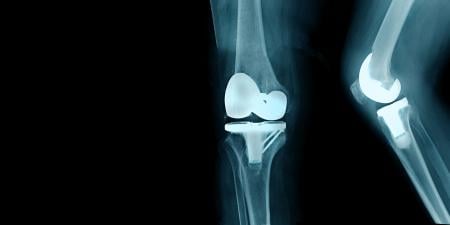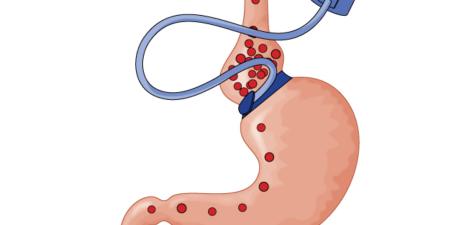For over a decade I have been part of a clinical trial at the vanguard of surgical innovation, the application of central thalamic deep brain stimulation (DBS) in severe traumatic brain injury. Our work resulted in a 2007 paper in Nature that indicated that DBS may promote functional recovery from severe traumatic brain injury years after injury [1].
As a physician-ethicist and co-investigator, I framed the historical [2-5], ethical, [6-10] and policy [11-14] issues necessary for the design and conduct of the research that resulted in the publication. These issues related to invasive research in a decisionally incapacitated subject who could not give consent, the role of surrogate decision making, and the proportionality of the study. Our goal was to design a study that would maximize potential benefits and minimize risks.
This study was instructive in these ethical domains, as well as in scientific domains related to disorders of consciousness and mechanisms of recovery. More recently, however, the study has helped illustrate how society assesses the economics of surgical innovation in marginalized populations. In this paper I focus on this theme and consider the interplay of ethics and economics in innovative surgical research, paying particular attention to the interests of patients and their families [15].
Let me begin with a review of the case report. The subject was a 38-year-old who had remained in the minimally conscious state (MCS) for 6 years after having been assaulted. MCS is a disorder of consciousness functionally above the vegetative state [16]. MCS patients have definite, albeit intermittent, evidence of consciousness. They may show intention, attention, and memory and have awareness of self, others, or the environment, but only episodically [17].
The subject had an initial Glasgow Coma Scale of 3. He progressed to MCS in 3 months. Upon study enrollment, he sometimes followed commands with eye movements. He could neither communicate nor take food by mouth and was dependent upon tube feedings [1, 10].
Over the course of the DBS study, the subject manifested improved levels of arousal, motor function, swallowing, and expressive speech, assessed by objective measures, including the JFK Coma Recovery Scale-Revised [18]. Now he is more mobile, can eat food by mouth, and can communicate in short sentences. He also regained aspects of personal agency and is now able to express a preference when prompted [10].
Since publication of the research paper on this case, I am invariably asked about the costs of DBS and whether it was worth it. Although this is understandable, given the austerity of the times and the broader debate about distributive justice in health care, the question strikes me as problematic. Generally we do not bring cost into the equation when considering early clinical trials. The Food and Drug Administration does not weigh cost considerations when granting either an investigational new device (IDE) or new drug exemption (IND). At this stage of innovation, a premium is placed on discovery, recognizing that costs need not be assessed until after interventions are validated. Moreover, prices should come down as methods are refined.
So why the inevitable question? In my view, it is a proxy for deeply held, unexamined biases towards patients with severe brain injury and a belief that nothing can or should be done. These views date back to landmark legal cases like Quinlan, which asserted a right to die based on an irretrievable loss of a “cognitive or sapient life” in the permanent vegetative state [19, 7]. Although the Quinlan court’s establishment of patients’ or surrogates’ right to withhold life-sustaining treatment was an ethical good [20], generalizing hopelessness to all severe brain injury was not [7]. By failing to distinguish between vegetative and minimally conscious states [21], we deprive patients in the latter of access to emerging modalities that might promote recovery [22].
Although these biases are expressed toward patients with severe brain injury, the lesson for surgical innovation is a generic one: when assessing new devices or techniques for marginalized populations (with chronic or out-of-fashion conditions), it is critical to consider costs and benefits free of unexamined biases. Anything less is discriminatory and unjust.
If we overcome these biases and actually apply objective standards to a hypothetical cost-benefits analysis of DBS in MCS, it is possible to imagine that up-front costs of patient assessment, DBS surgical implantation, and follow-up could result in a cost-effective intervention. As one colleague of mine, Dr. Frank Levy, put it in an October 2009 e-mail, those who purport to believe in cost-benefit analysis have a responsibility to apply those methods. They cannot just invoke their prejudices and stop there; they are obliged to collect and examine the data.
To this end and for the purposes of this analysis, let us postulate that DBS will be established as a viable therapy for MCS, with a significant number of subjects in clinical trials having had improvements comparable to those of the first subject. If we take this hypothetical—and I stress it remains hypothetical early in this work—as a predicate for a cost-benefit analysis, we can immediately see that DBS effects should decrease the fixed costs of institutional care.
The benefits seen in our first subject, if replicated, could have significant economic implications. His enhanced mobility reduces his need for prophylactic anticoagulation and its associated risks and costs. His nutritional status is improved with oral food intake, raising his albumin. This benefit, along with his enhanced mobility, decreases his risk of bedsores and accelerates healing when they do occur. His ability to swallow and manage his secretions—along with removal of the PEG and, again, his mobility—make it less likely he will develop an aspiration pneumonia. His cognitive improvements now allow him to respond to questions about pain, discomfort, and a whole range of symptoms. This should help his doctors diagnose brewing conditions more quickly and cost-effectively. Finally—and perhaps most critically—his enhanced cognitive abilities and growing ability to speak allow for more meaningful interactions with his family and loved ones.
Much of this can–and should be—cost out. If and when this intervention is validated, health economists will need to calculate the decreased incidence of the aforementioned complications of chronic care (e.g., the cost of a bedsore or hospitalization for aspiration pneumonia) in an appropriately sized cohort and weigh these fixed costs for this population against the putative decreased morbidity seen with DBS. Only then can an objective cost-benefit analysis be offered for this intervention.
Some might worry that the advent of DBS for MCS creates an application that will expand markets and expenditures, but severely brain-injured patients—and the cost associated with their chronic care—are already in the system. Their existence is a consequence of failed efforts in acute care to achieve better functional outcomes. In these circumstances, an effective therapy for MCS would not create a clinical need but rather respond to unmet ones brought about by acute care technologies that can save lives but not completely mend them.
The medical ethicist in me hopes that a validated therapeutic intervention for MCS would be sustained by humane intent alone. But I am not so naive as to think that good intentions alone will win the day. Too many patients in MCS are neglected and isolated in chronic care, receiving what is euphemistically called “custodial care,” minimally conscious but mistakenly diagnosed as being vegetative [23]. One recent study estimated that error rate at an appalling 41 percent [24].
Against such odds, an eventual cost-benefit analysis of DBS for MCS could be instrumental, if this surgical innovation matures into a safe and effective therapy. When that occurs, a robust cost-benefit analysis would be helpful. Objective data might demonstrate, notwithstanding some recent critiques of medicine’s technological imperative [25], that medical innovation can sometimes be both humane and affordable. That is an important lesson for medicine and society.
References
- Schiff ND, Giacino JT, Kalmar K, et al. Behavioral improvements with thalamic stimulation after severe traumatic brain injury. Nature. 2007;448(7153):600-603.
- Fins JJ. From psychosurgery to neuromodulation and palliation: history’s lessons for the ethical conduct and regulation of neuropsychiatric research. Neurosurg Clin N Am. 2003;14(2):303-319.
- Fins JJ, Rezai AR, Greenberg BD. Psychosurgery: avoiding an ethical redux while advancing a therapeutic future. Neurosurgery. 2006;59(4):713-716.
-
Fins JJ. A leg to stand on: Sir William Osler and Wilder Penfield’s “neuroethics.” Am J Bioeth. 2008;8(1):37-46.
- Fins JJ. Surgical innovation and ethical dilemmas: precautions & proximity. Cleve Clin J Med. 2008;75(Suppl 6):S7-12.
- Fins JJ. A proposed ethical framework for interventional cognitive neuroscience: a consideration of deep brain stimulation in impaired consciousness. Neurol Res. 2000;22(3):273-278.
- Fins JJ. Constructing an ethical stereotaxy for severe brain injury: balancing risks, benefits and access. Nat Rev Neurosci. 2003;4(4):323-327.
-
Fins JJ. Deep Brain Stimulation: ethical issues in clinical practice and neurosurgical research. In: Krames E, Peckham PH and Rezai A, eds. Textbook of Neuromodulation. London: Elsevier; 2009:81-91.
- Fins JJ. Neuroethics and neuroimaging: moving toward transparency. Am J Bioeth. 2008;8(9):46-52.
- Schiff ND, Giacino JT, Fins JJ. Deep brain stimulation, neuroethics, and the minimally conscious state: moving beyond proof of principle. Arch Neurol. 2009;66(6):697-702.
- Fins JJ, Schachter M. Investigators, industry, and the heuristic device: ethics, patent law, and clinical innovation. Account Res. 2001;8(3):219-233.
- Fins JJ. Disclose and justify: intellectual property, conflicts of interest, and neurosurgery. Congress Q. 2007;8(3):34-36.
-
Fins JJ. Deep brain stimulation, free markets and the scientific commons: Is it time to revisit the Bayh-Dole Act of 1980? Neuromodulation. 2009. In press.
-
Fins JJ, Schiff ND. Deep Brain Stimulation and the ethics of transparency. J Clin Ethics. Submitted.
- Cohen PD, Herman L, Jedlinskis S, et al. Ethical issues in clinic neuroscience research: a patient's perspective. Neurotherapeutics. 2007;4(3):537-544.
- Jennett B, Plum F. Persistent vegetative state after brain damage: a syndrome in search of a name. Lancet. 1972;1(7753):734-737.
- Giacino JT, Ashwal S, Childs N, et al. The minimally conscious state: definition and diagnostic criteria. Neurology. 2002;58(3):349-353.
- Giacino JT, Kalmar K, Whyte J. The JFK Coma Recovery Scale-Revised: measurement characteristics and diagnostic utility. Arch Phys Med Rehabil. 2004;85(12):2020-2029.
-
Matter of Karen Quinlan, 70 NJ 10, 355 A2d 677 (1976).
-
Fins JJ. A Palliative Ethic of Care: Clinical Wisdom at Life's End.Sudbury, MA: Jones and Bartlett; 2006.
- Fins JJ, Plum F. Neurological diagnosis is more than a state of mind: diagnostic clarity and impaired consciousness. Arch Neurol. 2004;61(9):1357-1360.
- Fins JJ. Affirming the right to care, preserving the right to die: disorders of consciousness and neuroethics after Schiavo. Palliat Support Care. 2006;4(2):169-178.
- Fins JJ, Master MG, Gerber LM, Giacino JT. The Minimally Conscious State: a diagnosis in search of an epidemiology. Arch Neur. 2007;64(10):1400-1405.
- Schnakers C, Vanhaudenhuyse A, Giacino JT, et al. Diagnostic accuracy of the vegetative and minimally conscious state: clinical consensus versus standardized neurobehavioral assessment. BMC Neurol. 2009;9(35):
-
Callahan D. Taming the Beast: How Medical Technology Costs are Destroying our Health Care System. Princeton: Princeton University Press, 2009.



